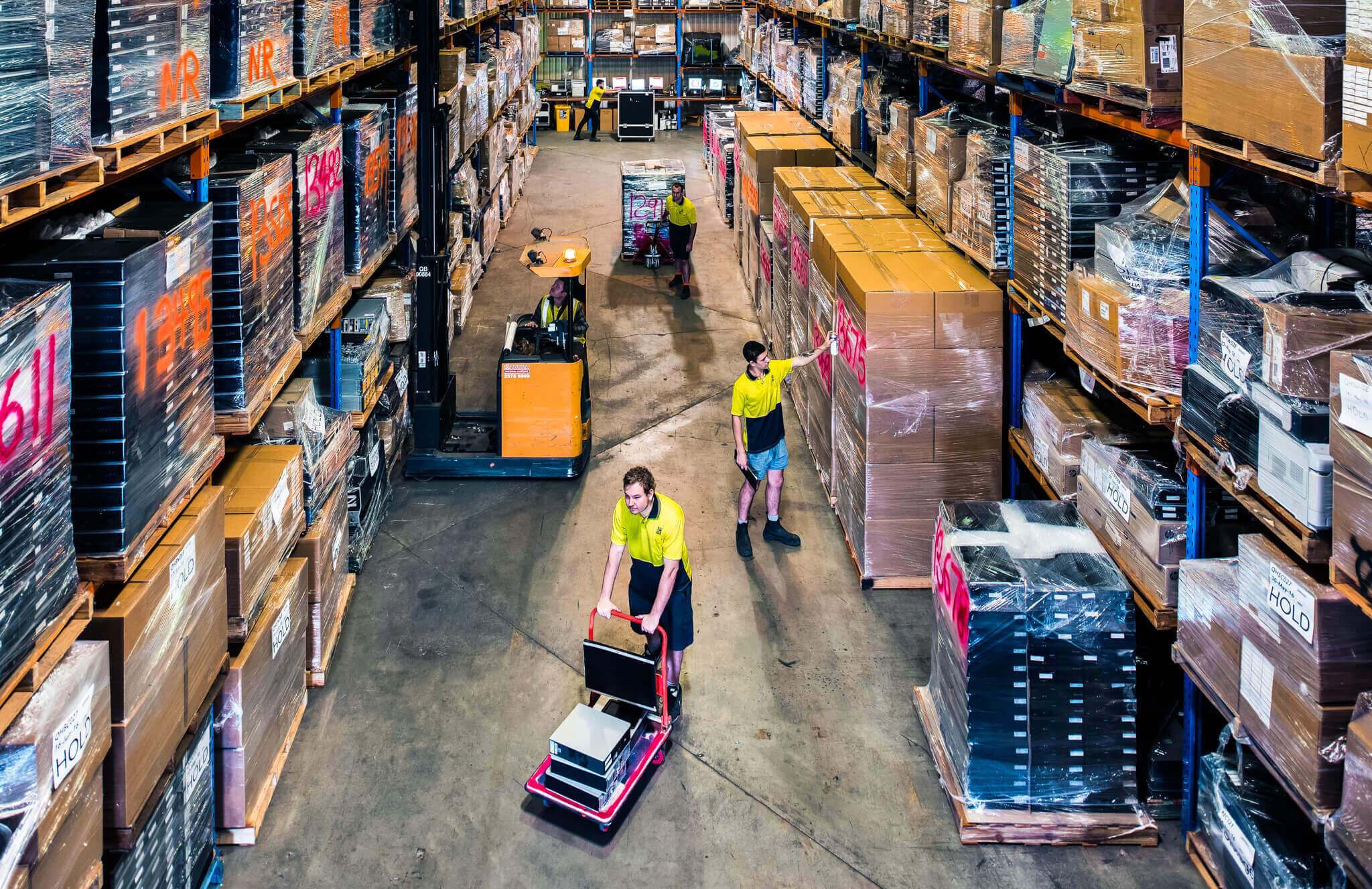They’re big, bulky and the cost of transporting them often outweighs their commercial value. So what happens to printers after ACT Logistics collects them?
FIRST, LET’S LOOK AT WHAT’S INSIDE THEM
Lots of heavy duty ABS plastic. Between 20 and 80 kg of steel and aluminium (in a multi-function device). Toner – typically very bad for the environment. Some precious metals and trace elements.
And a lot of space to store and print paper. And there’s the rub.
It’s the space that counts against a printer’s resale value. Typically, printers are heavy duty and very reliable, capable of printing hundreds of thousands pages more at the point of their retirement. They work fine a high percentage of the time. So you would be forgiven for thinking that a retired printer was still worth a lot of money, right?
Unfortunately that’s not true. The cubic volume that a printer takes up means that the cost of shipping it isn’t calculated by its weight, but by the volume of a truck or shipping container that it consumes during transport. Effectively, for a multi-function device with a couple of paper trays, it’s treated like the cost of shipping a full pallet to the end destination. And that’s relatively expensive no matter how far you’re shipping it.
Factor in thousands of working printers reaching end-of-life around the globe each week and you can see that the economics just don’t stack up favourably. Collecting, refurbishing and then on-shipping a printer that once cost $10,000 but is now worth a fraction of that value doesn’t lead to a profitable outcome very often.
SO, THEY’RE EXPENSIVE TO SHIP – DOES THAT MEAN THEY GET DUMPED?
No, not at all. The printers that we collect are brought to our nearest facility via a secure chain of custody. They are assessed, their hard drives wiped securely, they’re refurbished and then we resell them through our domestic sales channel or we send a special shipment to our international partners. We don’t make a lot of money on such a shipment, but it’s an important part of our living up to our values.
We’re committed to giving all working devices a second life to keep them out of the waste stream.
WHAT HAPPENS TO PRINTERS THAT AREN’T WORKING?
We have downstream partners that specialise in value recovery from non-working printers (and computers, servers, monitors and whiteboards etc.) They charge a per kilogram amount to tear down and recycle the printer. They make a small amount of money from the recovered components and the per kg fee covers the difference between the recovered value and the labour cost to disassemble it.
Where parts like toner cartridges are concerned, our downstream partners have their own partners that specialise in handling such special parts, and they pass the components on until there is nothing left.
So even when a printer has no resale value, we’re 100% committed to diversion from landfill.
SUMMARY
- Many printers finish their first life in working condition
- Their bulky shape makes them low-profit or no-profit for companies like us when you factor in shipping across large distances
- Despite the low profitability, we refurbish, test and ship printers to both our domestic and international sales channels, to give them a second life
- Where a printer isn’t working, we engage downstream partners to help us deliver on our 100% commitment to diversion from landfill


